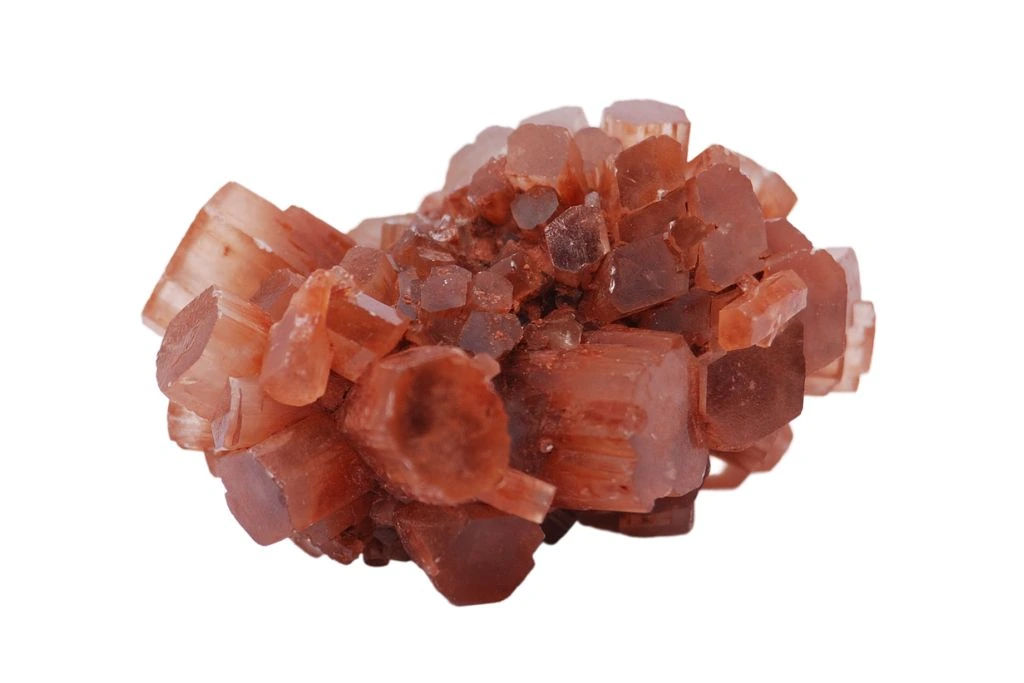Color and Appearance of Aragonite
Aragonite is a captivating mineral known for its diverse range of colors and unique crystal formations. This calcium carbonate mineral typically appears in shades of white, gray, yellow, and pale blue. However, it can also be found in more vibrant hues such as red, brown, green, and even violet, depending on the presence of trace elements or impurities.
Crystal Structure and Habit
One of the most distinctive features of aragonite is its crystal structure. It forms orthorhombic crystals, often appearing as elongated prismatic or needle-like formations. These crystals frequently cluster together, creating stunning aggregates that resemble delicate flower-like arrangements or intricate coral structures. In some cases, aragonite forms pseudohexagonal twinned crystals, which can be mistaken for hexagonal minerals at first glance.
Notable Physical Characteristics
Aragonite exhibits several noteworthy physical properties that set it apart from other minerals. It has a relatively low hardness on the Mohs scale, ranging from 3.5 to 4, making it softer than calcite. This mineral also displays a vitreous to resinous luster, which contributes to its attractive appearance. Aragonite is known for its perfect cleavage in one direction, which can result in easily separable layers or flakes.
Unique Features of Aragonite
Perhaps the most striking aspect of aragonite is its ability to form in various unusual shapes and configurations. One particularly remarkable form is the “sputnik” aragonite, named for its resemblance to satellite antennas. These formations consist of slender, radiating crystals that create spherical clusters. Another intriguing variety is the “iron flower” aragonite, which features intricate, petal-like formations that truly embody the mineral’s nickname as the “flower stone.” These distinctive characteristics make aragonite a favorite among mineral collectors and enthusiasts.
Historical and Cultural Significance of Aragonite
Aragonite has been prized throughout history for its unique properties and beauty. Ancient Egyptians used aragonite in jewelry and decorative objects, while Native American tribes incorporated it into ceremonial practices. In medieval Europe, aragonite was believed to possess healing powers and was often used in medicinal treatments.
Metaphysical Associations
In the realm of crystal healing and metaphysics, aragonite is associated with grounding and centering energies. It is believed to promote emotional balance, patience, and acceptance. Many practitioners use aragonite to enhance meditation practices and to facilitate a deeper connection with the Earth. The stone is also thought to boost intuition and spiritual growth.
Common Uses and Applications
Today, aragonite finds applications in both practical and spiritual contexts. In industry, it is used as a pH buffer in saltwater aquariums and as a component in certain building materials. Jewelry makers incorporate aragonite into various designs, appreciating its unique formations and earthy tones. In alternative medicine and crystal therapy, aragonite is used to address issues related to the skeletal system and to promote overall well-being.
Benefits and Healing Properties
Proponents of crystal healing attribute numerous benefits to aragonite. It is said to alleviate stress, reduce anger, and foster a sense of calm. Some believe that aragonite can help in overcoming emotional trauma and promoting self-confidence. Physically, it is thought to support bone health, aid in the absorption of calcium, and relieve muscle spasms. While these claims lack scientific backing, many individuals find comfort and solace in working with aragonite as part of their wellness routines.

